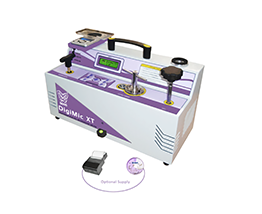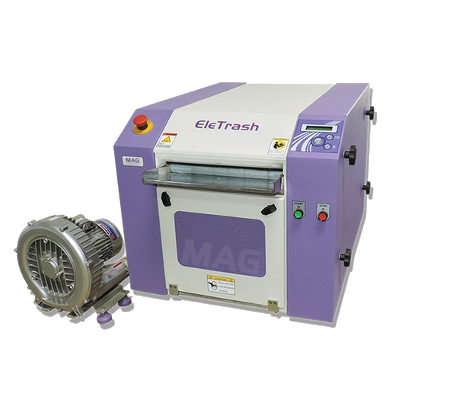What is an optical measurement system in precision engineering
Wiki Article
All You Required to Understand About Robotic Vision and Its Applications in Advanced Optical Dimension Solutions
Robotic vision represents a substantial improvement in the junction of computer system vision, expert system, and artificial intelligence. This innovation enhances the precision of optical measurement systems, making it possible for real-time information evaluation and enhanced quality assurance. Its effect spans numerous fields, from manufacturing to health care. Nonetheless, the evolving landscape of robotic vision questions concerning future abilities and applications (optical measurement system). What innovations lie ahead in this transformative area?Comprehending Robotic Vision: Secret Concepts and Technologies
Robotic vision incorporates the technologies and methodologies that enable equipments to interpret and understand aesthetic information from their environment. This field incorporates elements of computer vision, expert system, and artificial intelligence to facilitate automatic decision-making based on visual information. Trick ideas include picture processing, which includes the improvement and evaluation of images to draw out significant attributes, and object recognition, which enables machines to identify and categorize objects within a scene.
The Assimilation of Robotic Vision With Optical Measurement Systems
As sectors increasingly require accuracy and efficiency, the assimilation of robotic vision with optical dimension systems has actually become a transformative technique. This harmony allows robotics to regard and analyze their environments, boosting the capability of optical measurement systems to analyze and evaluate objects with unmatched precision. By gearing up optical sensors with innovative imaging technologies, robotic vision allows real-time information collection and handling, helping with prompt modifications to dimension parameters.The mix empowers automated systems to discover variants in measurements, surface area high quality, and alignment, which are vital in top quality control processes. Improved formulas, such as artificial intelligence, further enhance this assimilation by boosting the systems' ability to adapt to different settings and scenarios. The assimilation not just simplifies dimension procedures yet also reduces errors, ensuring that items fulfill rigid industry standards, consequently strengthening the function of robot vision in the future of optical measurement systems.
Applications of Robotic Vision in Manufacturing
In modern-day manufacturing atmospheres, using vision systems has transformed production processes by allowing makers to perform tasks with amazing precision and speed. Robotic vision systems are progressively employed for quality assurance, where they inspect products for flaws and guarantee adherence to requirements. These systems utilize video cameras and progressed formulas to evaluate products in real-time, significantly lowering the danger of human mistake.Furthermore, robot vision assists in automation in assembly lines, allowing robots to properly determine elements and construct them with minimal downtime. This technology additionally boosts stock management, as vision systems can check stock levels and identify disparities, assuring a smooth supply chain.
Additionally, robotic vision help in the application of smart factories, where information from vision systems can be incorporated with various other innovations to maximize workflows. On the whole, the applications of robotic vision in producing show its important function in improving performance, quality, and productivity across numerous sectors
Robotic Vision in Health Care: Reinventing Patient Care

In recovery, robot vision help in checking individual progression and customizing treatment sessions to individual needs. It supports physician by automating tasks such as information collection and person surveillance, enabling even more time to concentrate on direct patient communication. In addition, robot vision boosts telemedicine by making it possible for remote diagnosis and digital assessments, connecting the gap between people and healthcare service providers. On the whole, the application of robot vision in health care is revolutionizing client treatment, resulting in boosted outcomes, efficiency, and person complete satisfaction.
Future Trends and Developments in Robotic Vision Modern Technology
The quick development of robot vision modern technology assures to further improve its applications across different industries, consisting of medical care. Future trends show a substantial change towards integrating expert system and artificial intelligence, allowing systems to learn from large datasets and improve accuracy in time. Enhanced sensing unit modern right here technologies and deep understanding algorithms are anticipated to improve item acknowledgment capabilities, permitting robots to translate intricate environments better.
In addition, the integration of enhanced truth (AR) with robot vision will likely transform exactly how robots assist in procedures and diagnostics. This harmony will promote real-time information visualization, improving decision-making procedures. Furthermore, miniaturization of elements will result in more compact and flexible robot vision systems suitable for a variety of jobs. As these improvements unfold, markets will certainly witness raised automation and performance, strengthening robot vision as a cornerstone of innovative technical services.
Frequently Asked Inquiries
What Are the Key Elements of a Robotic Vision System?
The primary elements of a robot vision system consist of electronic cameras for photo capture, processors for data evaluation, formulas for interpretation, and actuators for activity. Together, these elements allow robotics to view and communicate with their setting efficiently.How Does Robotic Vision Improve Accuracy in Measurements?
Robotic vision improves measurement accuracy by making use of innovative imaging modern technologies, making it possible for accurate things detection and spatial evaluation. This ability reduces human mistake, enhances repeatability, and enables real-time adjustments, inevitably boosting general dimension dependability and performance.What Industries Advantage Many From Robotic Vision Modern Technology?
Various explanation industries benefit considerably from robot vision innovation, consisting of manufacturing, health care, agriculture, and logistics. These markets use improved precision, performance, and automation, bring about boosted productivity and minimized functional prices more information in their corresponding procedures.Can Robotic Vision Solutions Operate In Low-Light Conditions?
Robotic vision systems can undoubtedly work in low-light problems, making use of advanced sensors and formulas to enhance photo clearness. This ability allows them to carry out successfully in various environments, consisting of commercial and surveillance applications, despite having minimal illumination.What Are the Prices Linked With Executing Robotic Vision?
The expenses connected with implementing robotic vision differ significantly, influenced by elements such as cams, software, and combination. Added costs consist of maintenance, training employees, and potential upgrades to existing systems, which can collect gradually.Report this wiki page